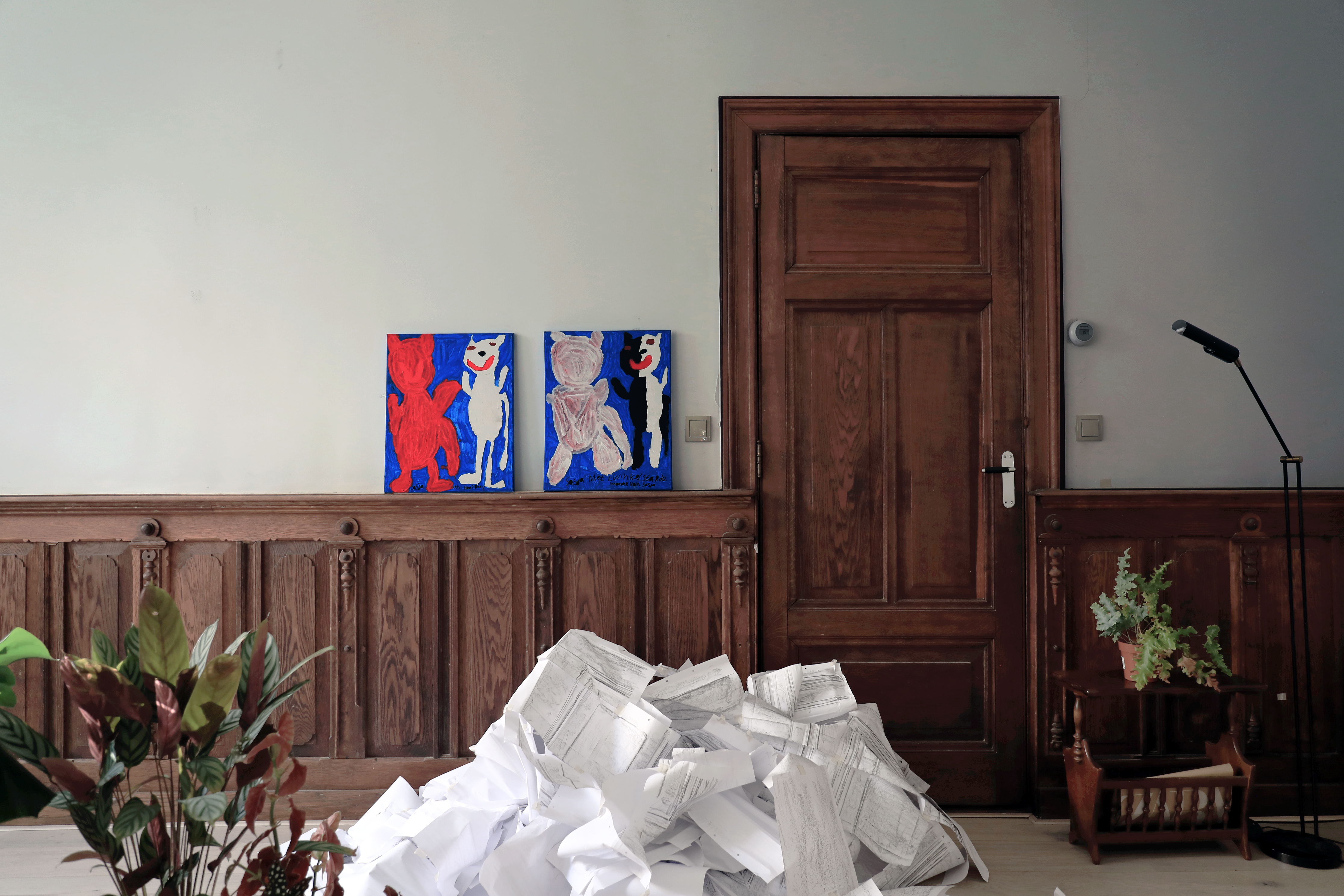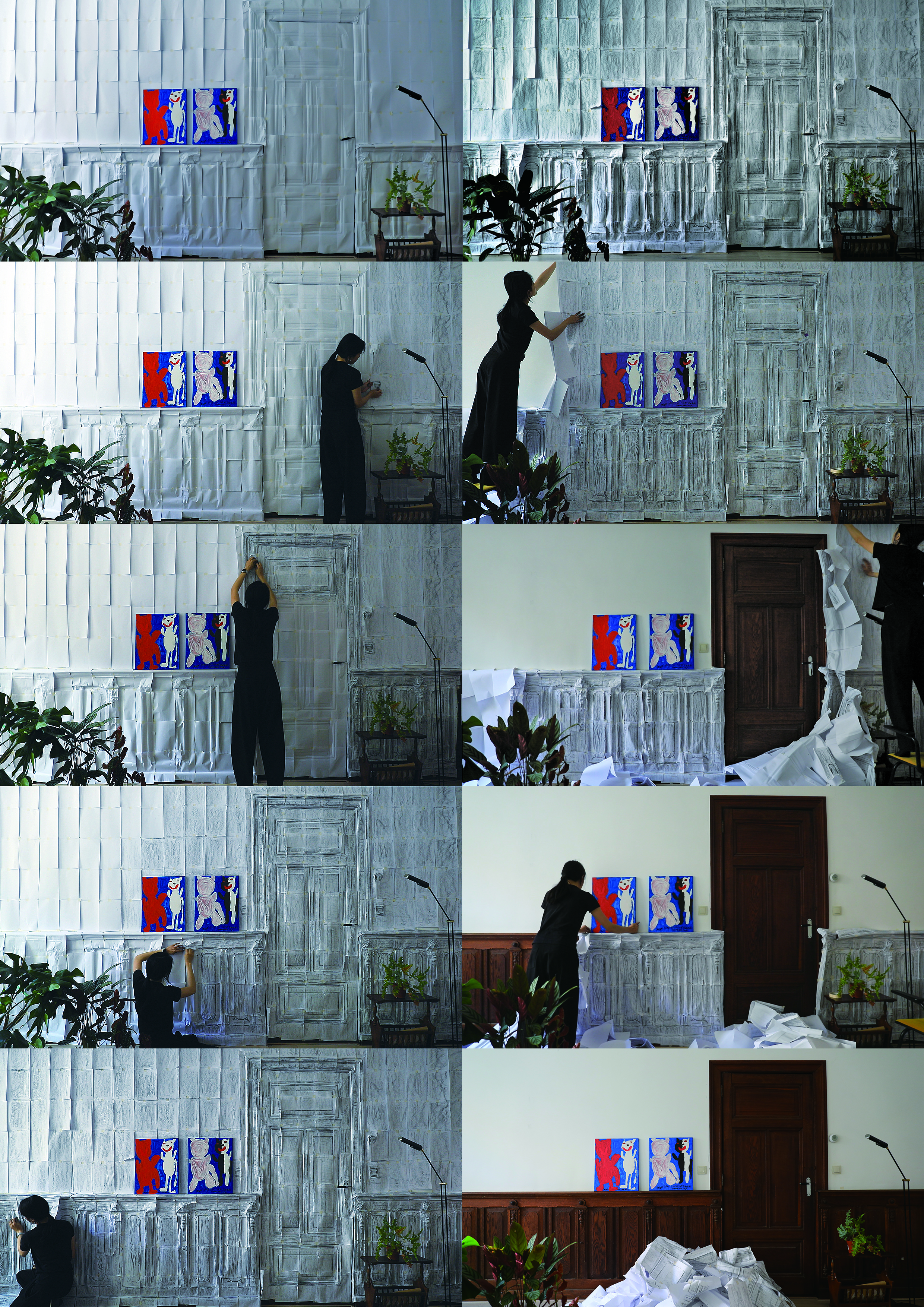Not Leave
But
Remain
But
Remain
The Flowing Bonds between Human and Space
2020-Now
Hand-on Research
Installation
Hand-on Research
Installation
"Nostalgia" is made up of the two
Greek words "Nostos" and "Algia". "Algia" means
"suffering" or "suffering for something"."Nostos"
means “to return”, “to go back". Therefore "Nostalgia"
represents “pain for a place or time I want to go back to but can't".
It is a sentimental longing for the past - our connection to a particular space captured in a particular temporal frame.
Although nostalgia involves reflecting on past experiences, because it motivates affective states, behaviours and goals, it can also influence people’s future lives. Reminiscing can also recall episodic memories from the past, which then often trigger thoughts and desires for the future. Vice versa, imagining our future can stimulate us to remember past states and events. Szu-Han, therefore, regards Nostalgia as a future-oriented emotional experience, drawing from the past to create the future. With this in mind, how does nostalgia, and reminiscing about past living places, impact desires for future homes?
Everyone has experienced migration to some degree, whether it was to search for a better livelihood or because of natural or man-made disasters. In Szu-Han’s 33 years of life, she has relocated nearly 40 times - some times willingly and others not. The places she used to regard as the most intimate spaces may have been abandoned, destroyed, or razed. Some may have completely physically disappeared from the world.
In 2020, Szu-Han investigated these relocations by physically revisiting her past homes and collecting the textures of each space using a charcoal pencil. These textures map the transient relationship between people and their living spaces, serving as a tool for recollection by evoking the trivial details in the background of our memories. In the temporal context of our liquid society, the thousands of imprints traced from the surface of walls, ceilings, and floors materialise the cognisant states of how and why we reminisce. Amongst them, nostalgia positions itself as a future-oriented emotional experience, impacting the affective states and desires that drive us, bridged across time and space.
Bridging past memories and present experiences, the work invites viewers to reflect on the impact of the increasing speed and volume of displacement due to accelerating mobility.
It is a sentimental longing for the past - our connection to a particular space captured in a particular temporal frame.
Although nostalgia involves reflecting on past experiences, because it motivates affective states, behaviours and goals, it can also influence people’s future lives. Reminiscing can also recall episodic memories from the past, which then often trigger thoughts and desires for the future. Vice versa, imagining our future can stimulate us to remember past states and events. Szu-Han, therefore, regards Nostalgia as a future-oriented emotional experience, drawing from the past to create the future. With this in mind, how does nostalgia, and reminiscing about past living places, impact desires for future homes?
Everyone has experienced migration to some degree, whether it was to search for a better livelihood or because of natural or man-made disasters. In Szu-Han’s 33 years of life, she has relocated nearly 40 times - some times willingly and others not. The places she used to regard as the most intimate spaces may have been abandoned, destroyed, or razed. Some may have completely physically disappeared from the world.
In 2020, Szu-Han investigated these relocations by physically revisiting her past homes and collecting the textures of each space using a charcoal pencil. These textures map the transient relationship between people and their living spaces, serving as a tool for recollection by evoking the trivial details in the background of our memories. In the temporal context of our liquid society, the thousands of imprints traced from the surface of walls, ceilings, and floors materialise the cognisant states of how and why we reminisce. Amongst them, nostalgia positions itself as a future-oriented emotional experience, impacting the affective states and desires that drive us, bridged across time and space.
Bridging past memories and present experiences, the work invites viewers to reflect on the impact of the increasing speed and volume of displacement due to accelerating mobility.

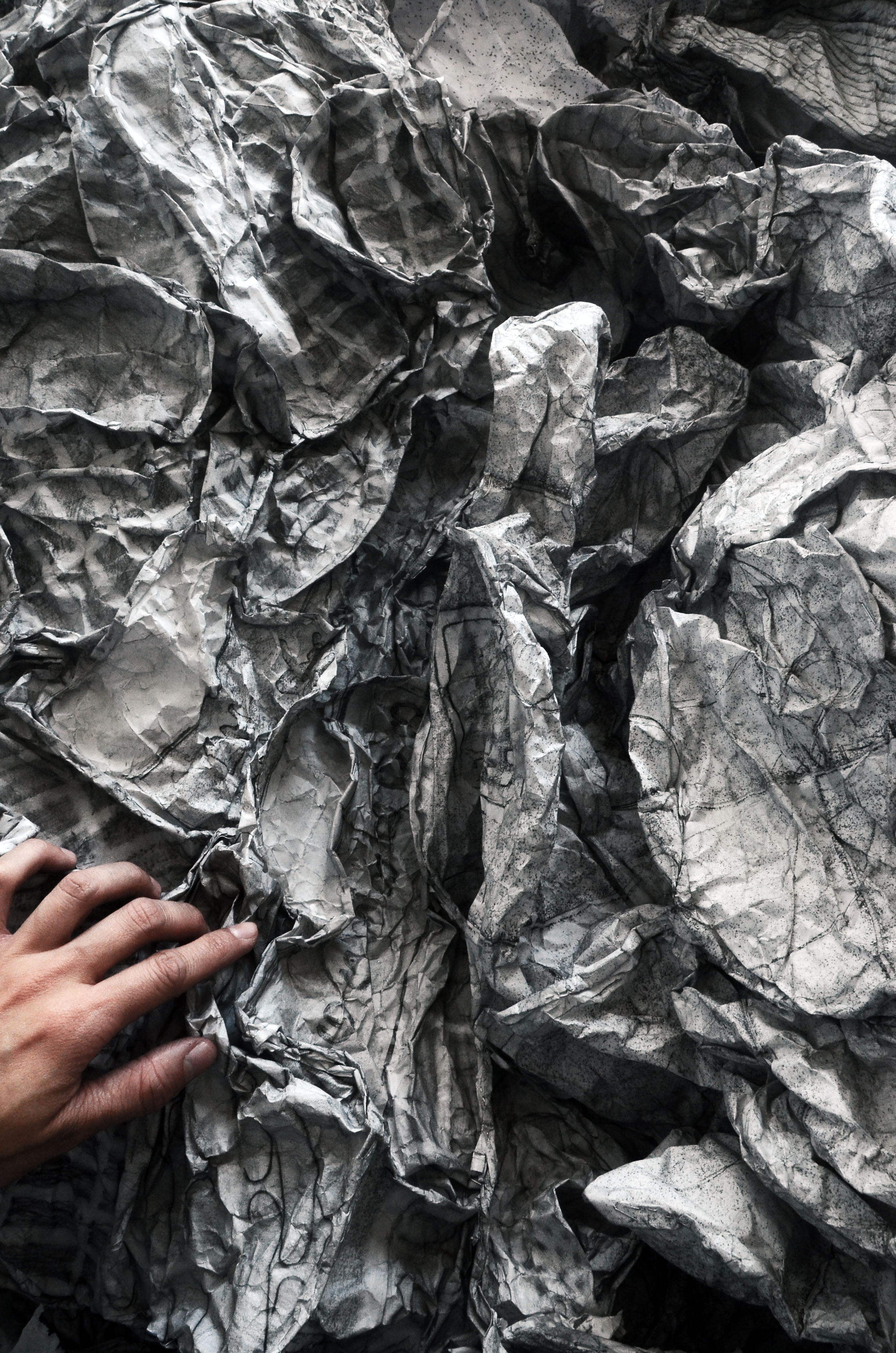
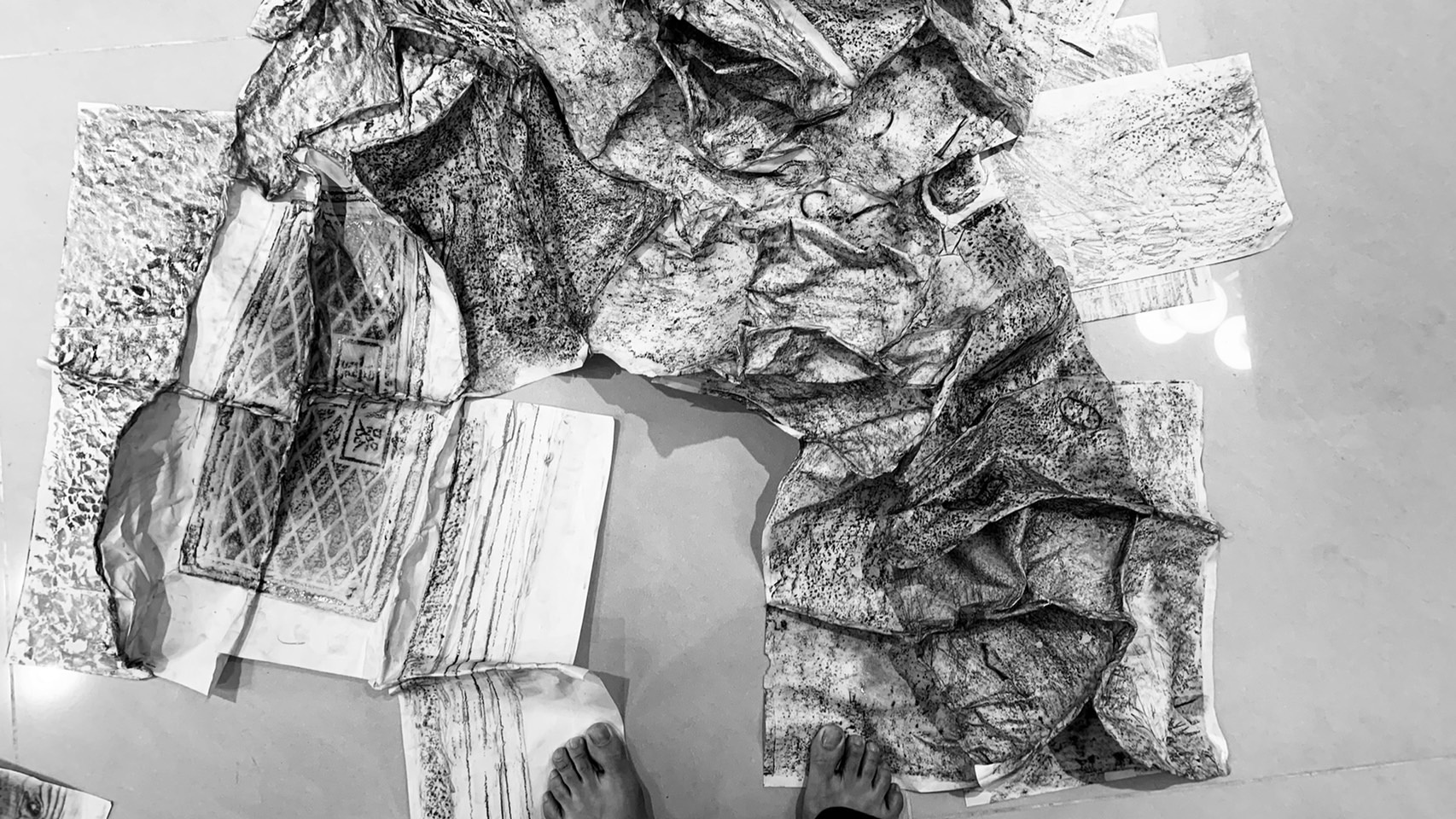
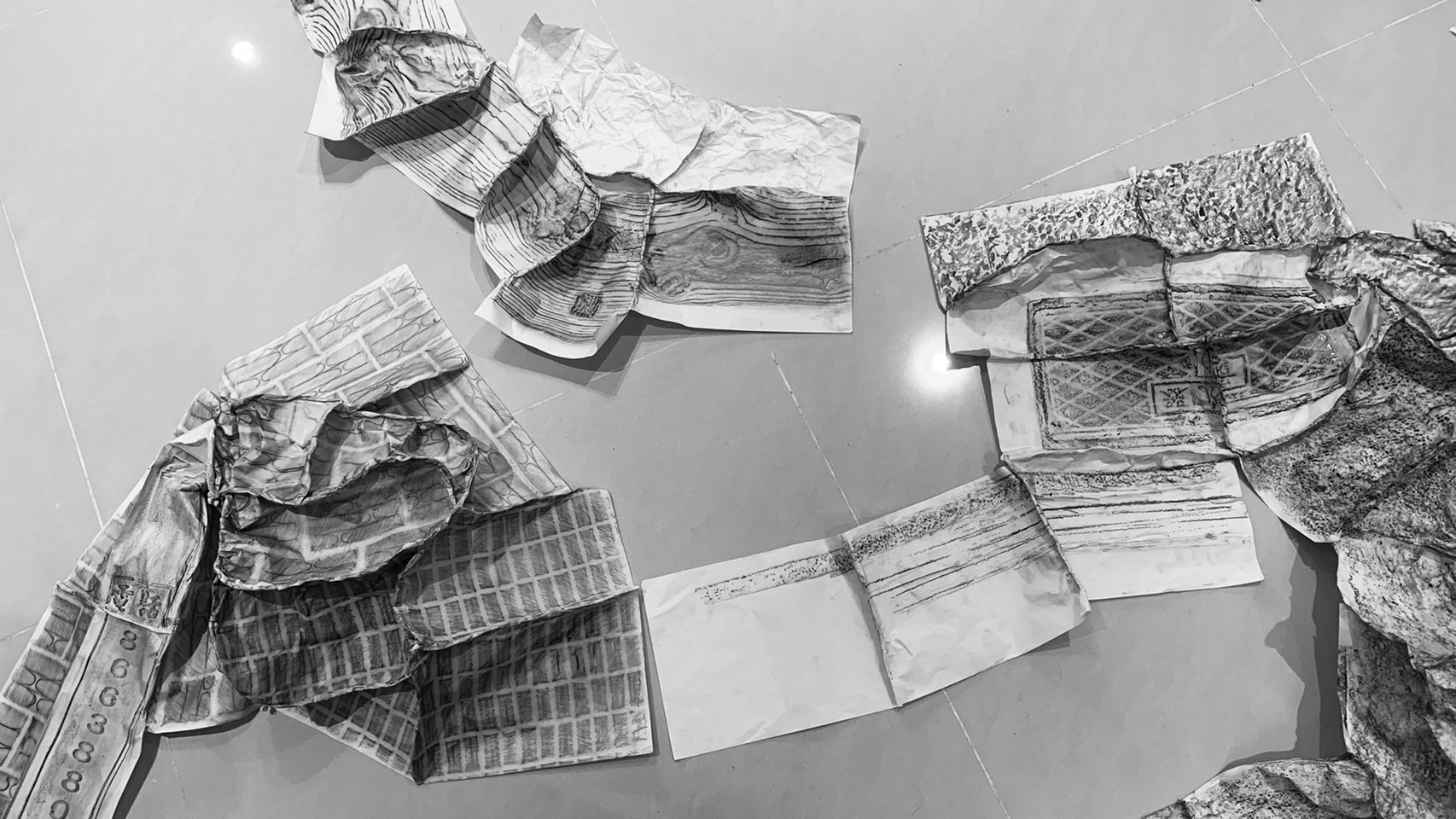
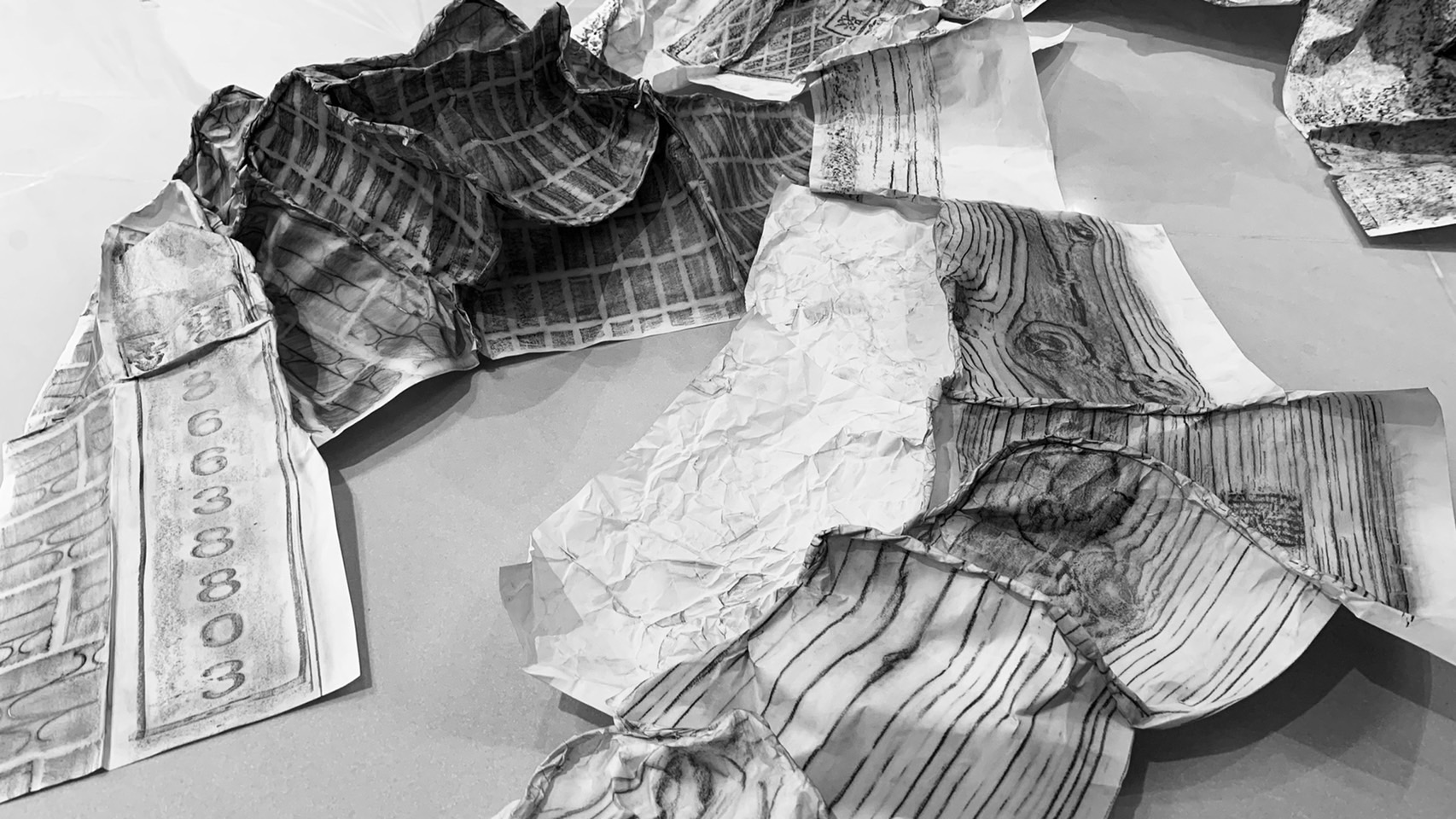
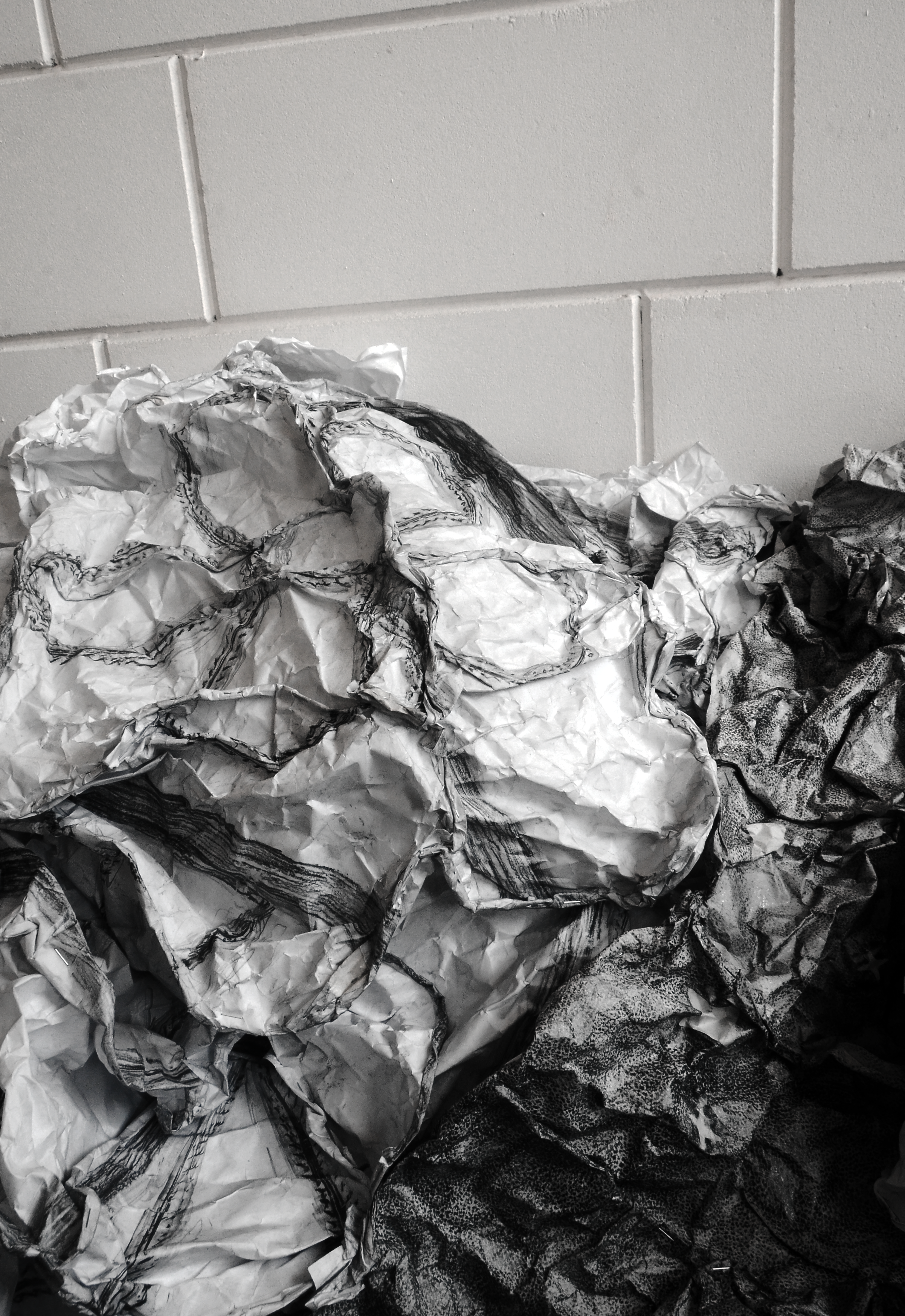

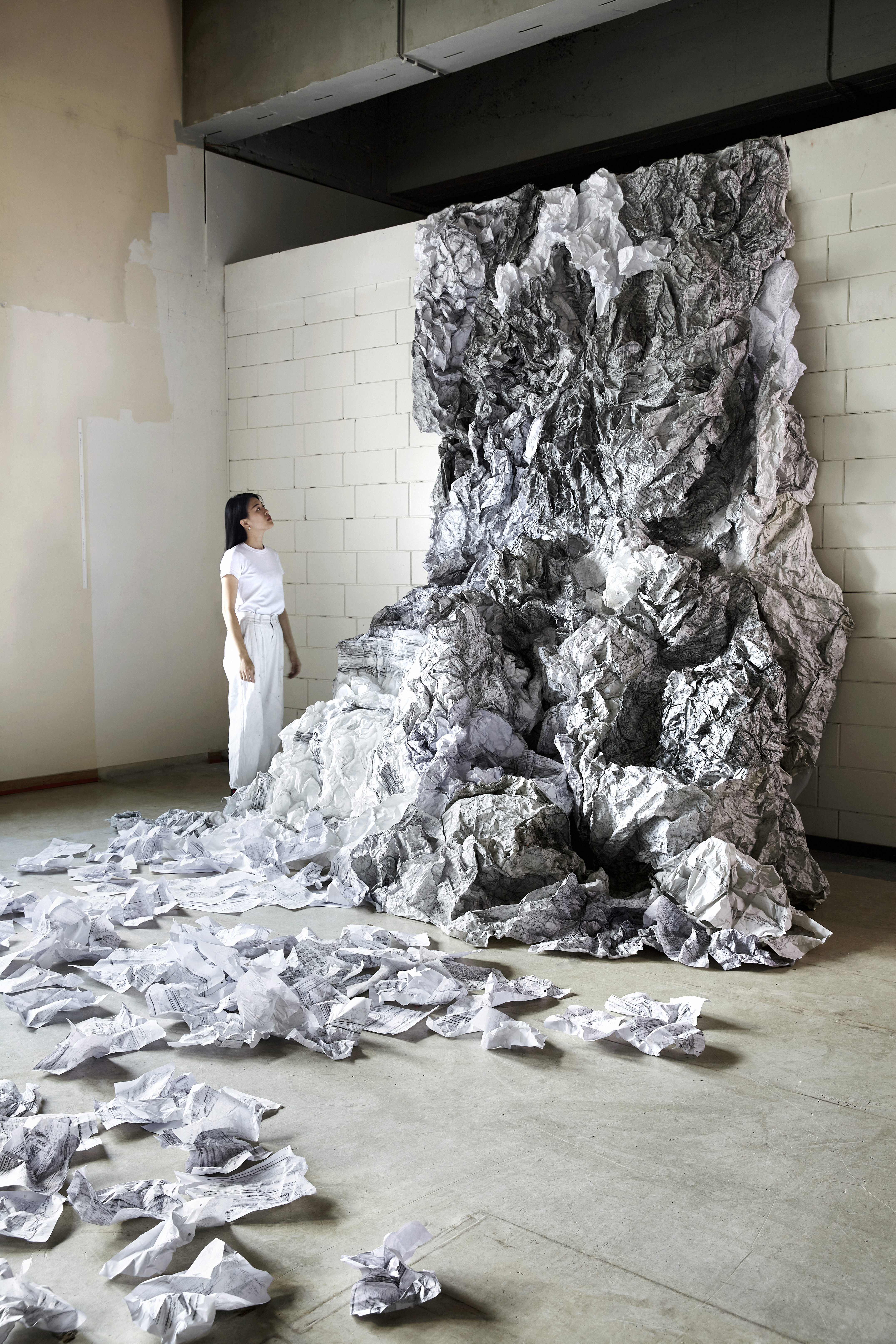
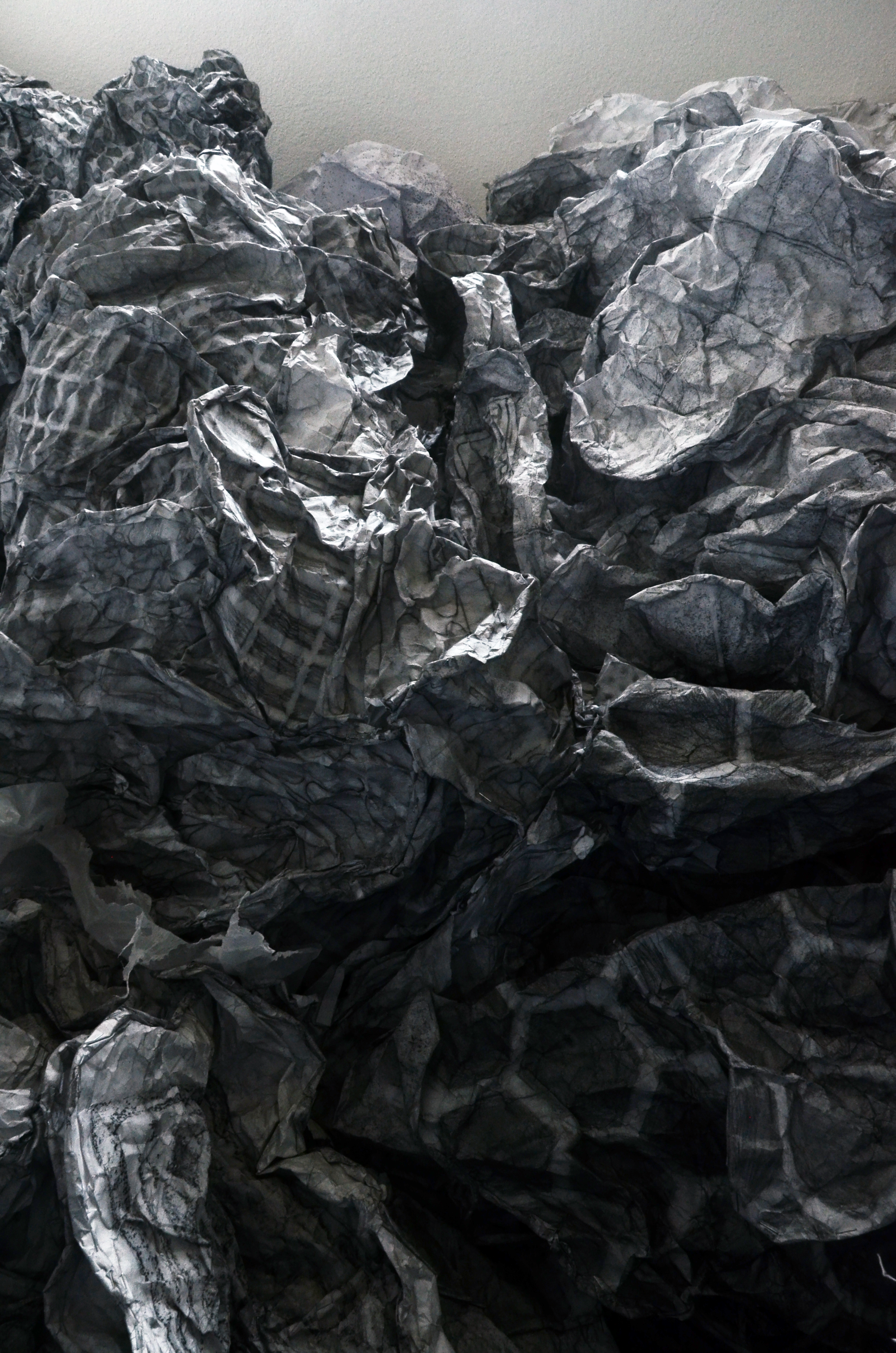





Home
Sweet Home
Sweet Home
2023
Installation
Performance
Institute:
MU Hybird Art House
Collaborator:
Vis-a-Vis(a)
Lucas Maassen
Photographer: Boudewijn Bollmann
Installation
Performance
Institute:
MU Hybird Art House
Collaborator:
Vis-a-Vis(a)
Lucas Maassen
Photographer: Boudewijn Bollmann
This performance was a collaboration
between seven non-European Union artists who used physical labor to construct a
dream-like house made of pink cotton candy. The purpose of the performance was
to meet one of the conditions for obtaining an artist visa, which requires
exhibiting three pieces of artwork to qualify for staying in the EU.
The performance aimed to explore the relationship between nationalism, ethnic identity, and sugar consumption. Traditionally, the concept of ethnic identity and nationalism suggests that identity is fixed and unchanging. However, this cannot explain how people's identities shift and how a common ethnic identity is formed in a diverse society. On the other hand, structuralism argues that identity begins to emerge when individuals are oppressed or dominated. Sugar consumption is also influenced by historical, cultural, and political factors. The production and supply of sugar are built on power relations, as colonial subjects were forced to engage in labor-intensive sugar cultivation and production to supply the demands of Western countries.
The dream-like house made of cotton candy visualizes how sugar has become a metaphor for the complicated application process and review procedure, highlighting the structural opposition between production and consumption in the market, as well as the interdependence between the EU and non-EU countries in terms of supply and demand. The house's impermanence is a reminder that identity is not fixed but rather fluid and influenced by power relations, historical factors, and other variables.
The performance aimed to explore the relationship between nationalism, ethnic identity, and sugar consumption. Traditionally, the concept of ethnic identity and nationalism suggests that identity is fixed and unchanging. However, this cannot explain how people's identities shift and how a common ethnic identity is formed in a diverse society. On the other hand, structuralism argues that identity begins to emerge when individuals are oppressed or dominated. Sugar consumption is also influenced by historical, cultural, and political factors. The production and supply of sugar are built on power relations, as colonial subjects were forced to engage in labor-intensive sugar cultivation and production to supply the demands of Western countries.
The dream-like house made of cotton candy visualizes how sugar has become a metaphor for the complicated application process and review procedure, highlighting the structural opposition between production and consumption in the market, as well as the interdependence between the EU and non-EU countries in terms of supply and demand. The house's impermanence is a reminder that identity is not fixed but rather fluid and influenced by power relations, historical factors, and other variables.
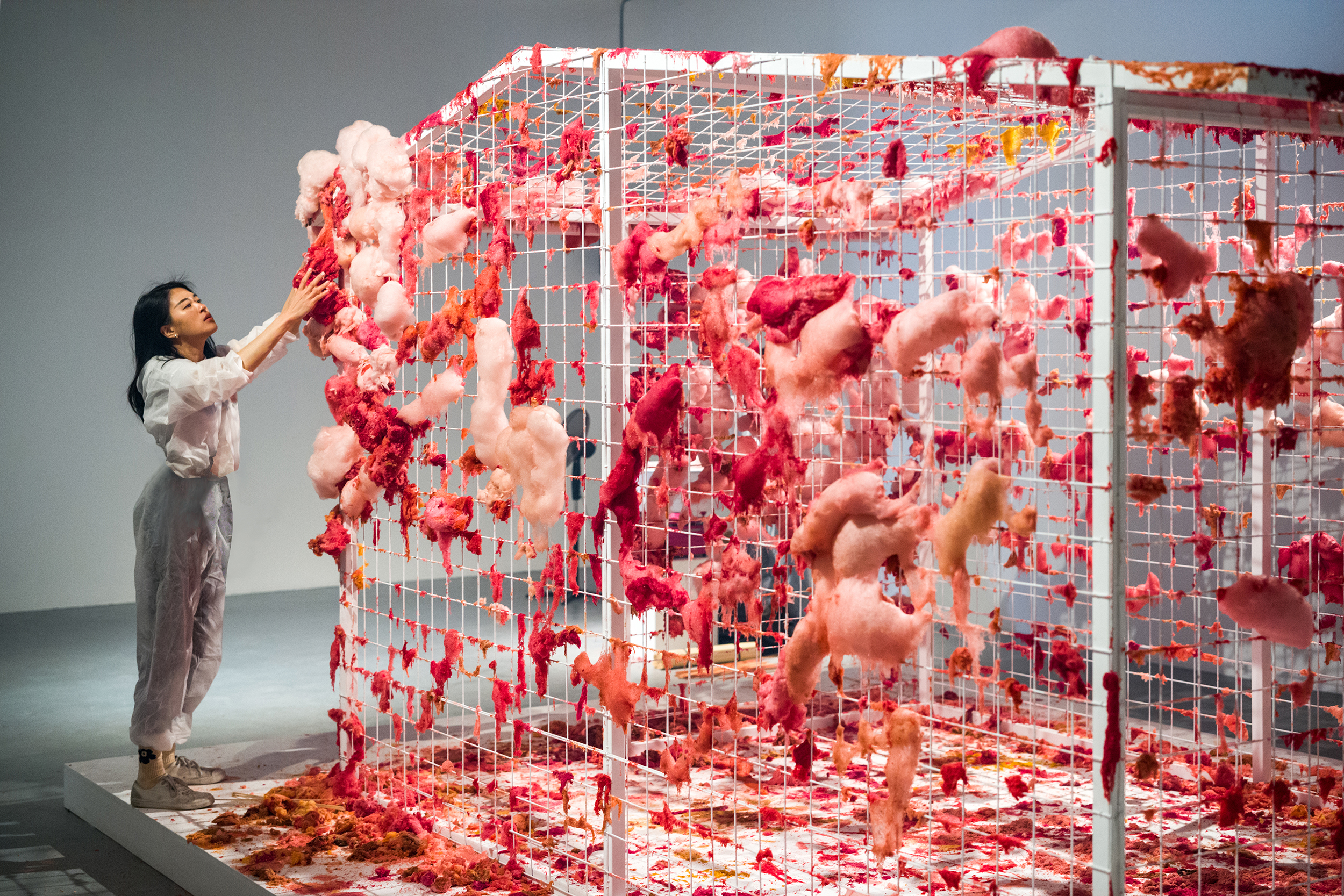
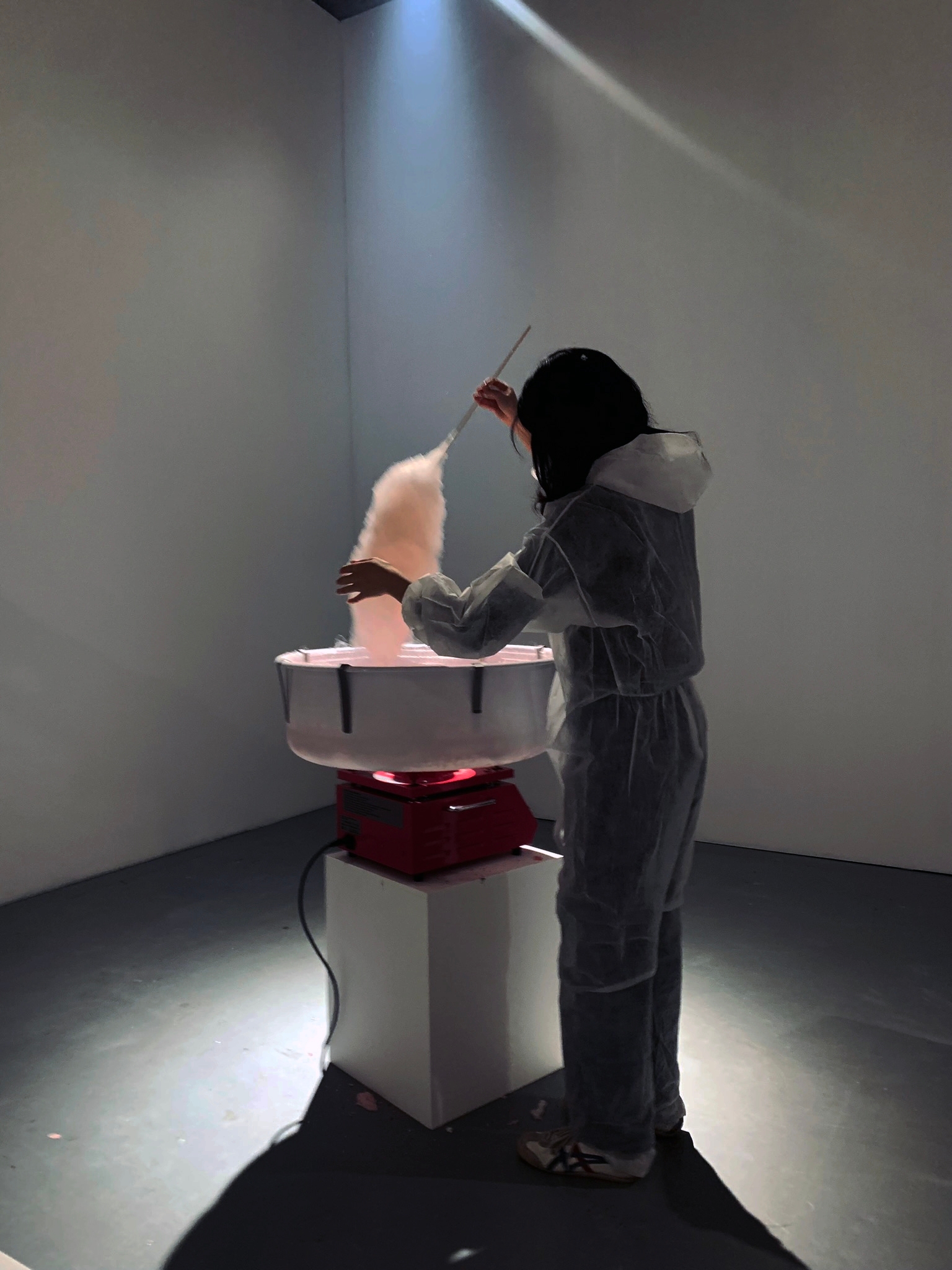


Homo
Homing
Home
Homing
Home
2021
Hand-on Research
Interaction Installation
Hand-on Research
Interaction Installation
In this work, she took all the marked sheets
from Home No.2 and spliced them into a single, extensive surface with no
distinct boundaries where one space bled into the next. “Homo Homing Home” was
not merely a simple installation, but a complete collection that contained
multiple layers of my artistic practices.
The solidity of each building became liquid, it
was hard to understand where one house started and another ended. Her past homes
became a two-dimensional surface that can be shaped over and over again.
It was composed of a mix of shapes, surfaces, and textures that all belong to my memories and lived experience, and whose traces you could find in the details on each sheet. During the making process, the marks on the paper became blurrier the more they were touched and manipulated but this was just like my fading memories getting blurrier, more imperfect, over time. The installation illustrated how the new space is made up of daily fragments of past homes; the images of old homes have a certain power to generate a new home atmosphere, and a new home atmosphere is based on the old images of home.
Furthermore, she emptied her room in the house she currently live in, the last house on the list of homes to visit, and installed this massive surface all over the walls, floor, and ceiling, attempting to build a room that lost any clear direction and dimension. She invited the people who have lived with her in each home she collected to her "new home" as participants. Navigating the space to find the unique marks of their own home, they matched their postures to the uneven, distorted space, moving back and forth, looking up and down. Each individual had their own rhythm in finding their home, like a performer on the stage, they searched for familiar scenes and a sense of belonging in the world she created. Piece by piece, the liquidity of the environment and the imperfect nature of the images guided participants in deciphering the space sheet by sheet.
Eventually, as the installation held the participants’ own memories of home, she was able to trace a common feeling of nostalgia, making our relationship closer and more stronger. It was a monumental space of shared memory. This installation is neither a document nor an actual house. It is a physical framework that, thanks to its abstract dimensions, offers room for encounter.
Szu-Han is interested in herself and you, and how we are affected by today’s world.
It was composed of a mix of shapes, surfaces, and textures that all belong to my memories and lived experience, and whose traces you could find in the details on each sheet. During the making process, the marks on the paper became blurrier the more they were touched and manipulated but this was just like my fading memories getting blurrier, more imperfect, over time. The installation illustrated how the new space is made up of daily fragments of past homes; the images of old homes have a certain power to generate a new home atmosphere, and a new home atmosphere is based on the old images of home.
Furthermore, she emptied her room in the house she currently live in, the last house on the list of homes to visit, and installed this massive surface all over the walls, floor, and ceiling, attempting to build a room that lost any clear direction and dimension. She invited the people who have lived with her in each home she collected to her "new home" as participants. Navigating the space to find the unique marks of their own home, they matched their postures to the uneven, distorted space, moving back and forth, looking up and down. Each individual had their own rhythm in finding their home, like a performer on the stage, they searched for familiar scenes and a sense of belonging in the world she created. Piece by piece, the liquidity of the environment and the imperfect nature of the images guided participants in deciphering the space sheet by sheet.
Eventually, as the installation held the participants’ own memories of home, she was able to trace a common feeling of nostalgia, making our relationship closer and more stronger. It was a monumental space of shared memory. This installation is neither a document nor an actual house. It is a physical framework that, thanks to its abstract dimensions, offers room for encounter.
Szu-Han is interested in herself and you, and how we are affected by today’s world.

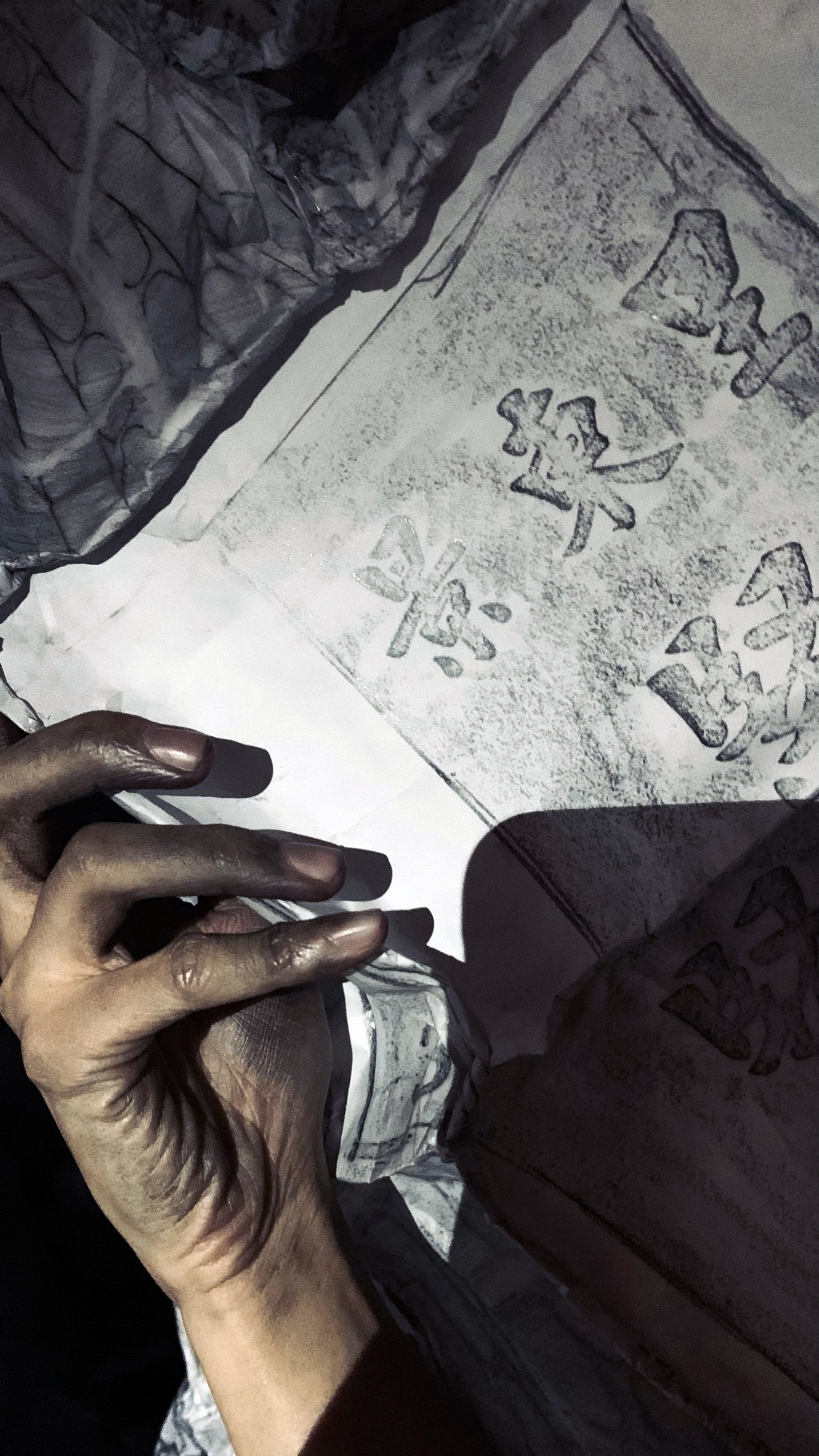
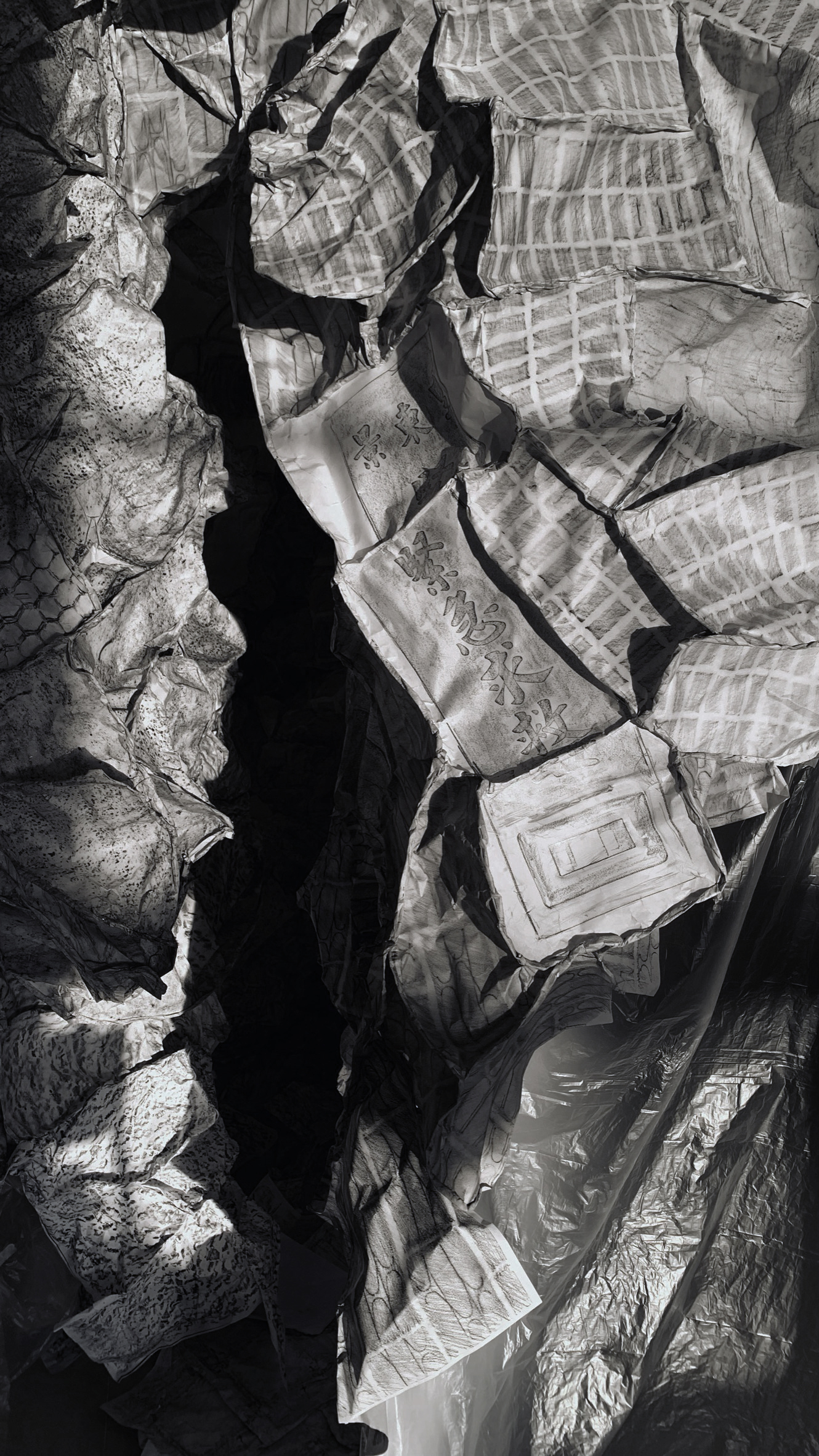



Home No.2
2021
Archive of home
Archive of home
Anticipated Nostalgia:
Drawing from the past for the future
Among all Szu-Han former living spaces, she was fortunately able to return to the second home she ever lived in. It consisted of a social housing structure combined with a traditional market. The house was destroyed more than a decade ago. The market still standed but was programmed for demolition in the middle of 2022. This semi-abandoned market was the core of her life when she was a child. Every morning, when she opened her eyes, she went to there with my grandparents to sell vegetables. Each afternoon it became a wonderful playground for her and other kids. In the evening, all the adults and children would sit around the yard, drink tea, and enjoy a meal together. All her daily activities were concentrated in this place. She could almost consider it my home. So when she found out this market was going to be demolished soon after, she realised that if she did not return to Taiwan to do research in 2021, then this so-called home would disappear from this world without a trace.
This time, the act of capturing surfaces was not only about personal nostalgia but it also shows how she react to a place that is destined to disappear, an anticipation of loss and worry.
Body Rebuild the Vanishing Home
Vision alone is incomplete, it can only trigger a limited amount of memories, and in capturing the surface on paper she created yet another visual representation of the construction. However, the movements she did while carrying out the experiment replicated the way she moved while playing there as a child. This unlocked a series of new, forgotten memories. This was an unexpected result that highlighted the role of the body and of movement in storing memories and experiences of the past. After realising this, she took the footage from the experiment and extracted the meaningful postures.
Drawing from the past for the future
Among all Szu-Han former living spaces, she was fortunately able to return to the second home she ever lived in. It consisted of a social housing structure combined with a traditional market. The house was destroyed more than a decade ago. The market still standed but was programmed for demolition in the middle of 2022. This semi-abandoned market was the core of her life when she was a child. Every morning, when she opened her eyes, she went to there with my grandparents to sell vegetables. Each afternoon it became a wonderful playground for her and other kids. In the evening, all the adults and children would sit around the yard, drink tea, and enjoy a meal together. All her daily activities were concentrated in this place. She could almost consider it my home. So when she found out this market was going to be demolished soon after, she realised that if she did not return to Taiwan to do research in 2021, then this so-called home would disappear from this world without a trace.
This time, the act of capturing surfaces was not only about personal nostalgia but it also shows how she react to a place that is destined to disappear, an anticipation of loss and worry.
Body Rebuild the Vanishing Home
Vision alone is incomplete, it can only trigger a limited amount of memories, and in capturing the surface on paper she created yet another visual representation of the construction. However, the movements she did while carrying out the experiment replicated the way she moved while playing there as a child. This unlocked a series of new, forgotten memories. This was an unexpected result that highlighted the role of the body and of movement in storing memories and experiences of the past. After realising this, she took the footage from the experiment and extracted the meaningful postures.
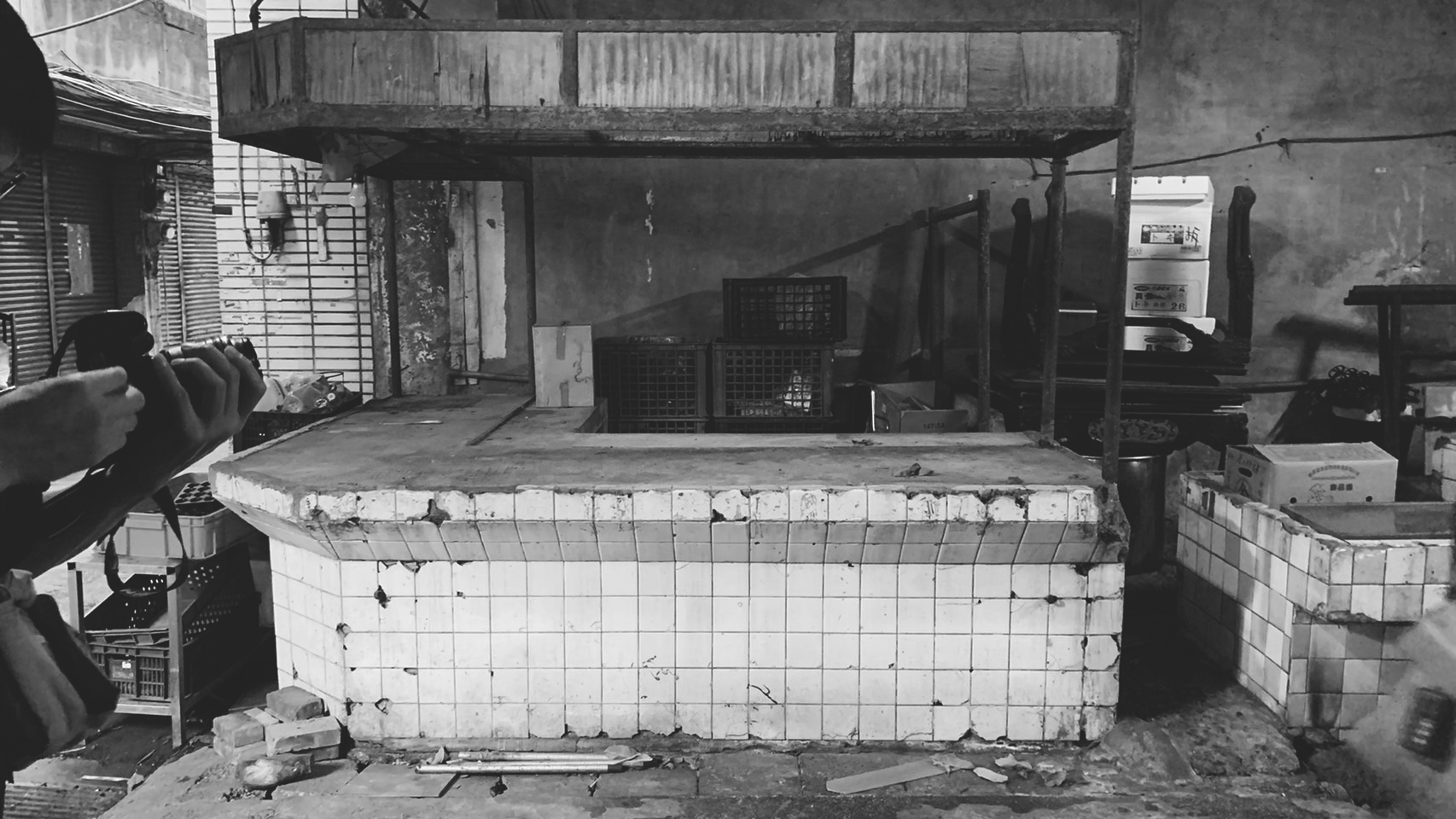







Home No.40
2021
Archive of home
Archive of home
This apartment was Szu-Han’s number 33 home during her life, It was located in Rotterdam, the Netherlands. Actually, It was her friend’s living room; therefore, she doesn’t even have a proper bed for sleep; instead, she spent 126 nights on the sofa. Every day she needed to be the first one to get up and the last one to go to bed for not disturbing roommates' daily life.

